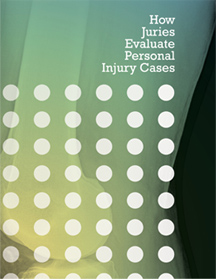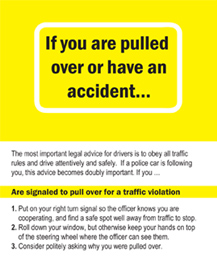Red flags that invite adjuster scrutiny
Before the claims adjuster questions specific items in any given claim, the adjuster must first consider whether the policy applies and if so, to what extent. Having done that, the adjuster will inquire into whatever is important to the resolution of the matter in dollar and cents.
Essentially, an insurance adjuster will question anything that doesn’t seem right given all the facts and circumstances as presented. As a result, depending upon the adjuster’s experience and training, as well as judgment, the adjuster will look into whatever he or she cannot explain or understand and anything that seems suspicious. (This may be as simple as just not having good “vibes” about the insured, the claimant, or the plaintiff.) If this occurs, it will become much tougher for the personal injury attorney to reach an acceptable resolution of the case. Here are some of the “red flags” that adjusters look for and are trained to look for.
Medical treatment
Beyond the adjuster’s feel for the situation is the basic need to verify and to articulate clearly the amount of loss or damage. To this end, certain things are subject to question:
- If a detailed listing of medical expenses is presented, the adjuster will consider whether the treatment is supported by the medical reports that are available.
- At this point, the type of doctor who is or has been treating the claimant becomes subject to scrutiny. Treatment solely by a chiropractor for orthopedic or neurological complaints will be examined closely. While treatment by a chiropractor is not necessarily wrong or improper, the fact is that adjusters look much more closely at treatment rendered by a chiropractor than by a neurosurgeon, for example.
- The amount of treatment and the frequency of treatment will also be considered. Physiotherapy treatments that continue on with no decrease in visits and no appreciable improvement indicated are always suspect.
- Soft-tissue injuries alone, accompanied by subjective claims of chronic pain and disability, with little or no objective medical findings to support them, also send up a red flag for an adjuster.
- Medical bills disproportionate to the injury being claimed, such as excessive charges for physical therapy, pre-existing complaints and medical treatment involving the same part of the body are suspect.
- Treatment not indicated by the type of injury being claimed, such as a psychiatric referral for low-impact accidents or soft-tissue injuries, will be questioned.
- If adjusters start seeing a pattern of certain attorneys and doctors referring clients and patients to one another, they start to associate the two together and tend to think that the two are “in cahoots” for less than honorable reasons. Adjusters will then look much more closely at that doctor’s records and give that doctor’s opinions (and bills) less credibility.
- If a plaintiff attorney has been known to use a certain doctor extensively, the client being treated will also be looked at closely. Usually an independent medical examination is requested even if at times it would not be ordinarily utilized in the type of case involved.
Loss of Earnings
When it comes to loss of earnings, many red flags are raised. Is the loss quoted “net” or “gross”? What does the person do for a living? Is the claimant salaried or self-employed? Are good, clean, certifiable records of income present? Examples of loss of earnings problems arise mostly for self-employed people; regularly salaried people have verifiable records available.
One is under a duty to mitigate damages. Thus, if possible, a self-employed person, such as an accountant, a contractor, a lawyer, or a doctor, must hire a replacement. (The self-employed individual cannot just can’t sit back, not work and build up a loss of profits.) Unless there is a clear disparity between an available replacement and the injured party hiring them, the usual loss of earnings is the amount paid the replacement.
The loss of earnings must be weighed against the verifiable injuries and the medical reports must support the fact that the injured party cannot do his or her usual job due to the alleged disability. That is, there must be a reasonable relation between the injury itself, the length of full or partial disability, and the time lost from work.
At the same time, overtreatment such as unnecessary physiotherapy could be questioned and as a result, the loss of time from one’s occupation could be improper as well. Overtreatment and overextended absences from work should be strongly questioned by the adjuster. If they have not been presented, are they easily estimated with some degree of accuracy or are good records available to be obtained?
Occupations
Both from a medical and a loss of income point of view, certain occupations are looked at somewhat askance just by their very existence in the claim. Some of these are:
- 1. Taxi drivers;
2. Truck drivers;
3. Iron workers;
4. Ambulance drivers;
5. Doctors;
6. Lawyers;
7. Policemen; and
8. Actors and musicians.
It is not uncommon for a rental truck or rental vehicle to be used in a staged accident. Therefore, involvement of rental cars requires additional considerations.
Medical personnel
Ambulance drivers are often connected with law firms to whom they can refer cases. Their medical knowledge coupled with their legal connections allows them to learn very early how to back up a claim. The same comment can be made about nurses and doctors because of their practical knowledge of these matters.
Union members and police
Union members are often referred to one or two special law firms that continually appear as counsel for iron workers, taxi drivers, truck drivers, etc. These firms refer these clients to personal injury medical experts who will give the attorney what he wants by way of medical diagnosis, treatment, reports and testimony. Any occupation that creates a sophistication in auto accidents or injury cases and has the potential of making money from litigation will be looked at carefully as part of the claims person’s investigation. Attorneys make some policemen, for example, aware of the potential for making such sums of money via litigation.
Rental vehicles
These rental vehicle accidents can often be solo collisions in remote areas with no witnesses and possibly no real police investigation. They can, in the case of a truck, be for personal property losses from damaged cargo. Many times, an allegation of unsafe vehicle or improper maintenance will be the gravamen of the case against the manufacturer of the truck, equipment and for the owner of the equipment.
Timing of personal injury attorney representation
People who quickly retain a personal injury lawyer at the outset of a claim are viewed with suspicion by claims adjusters, fairly or unfairly. Adjusters want, and generally believe that they deserve a chance to work with an injured person. They can understand a claimant retaining a lawyer if there is a dispute over the value of the claim or if negotiations have reached an impasse. To be denied the chance to deal with the claimant directly, however, puts some adjusters on edge.
Letters of representation dated the same day or even the day after the accident signal the adjuster that he or she may have a “claims conscious” claimant. Similarly, the amount of time that has passed between when the accident occurred and when the claimant first called an attorney also may cause the adjuster to treat the claim as a “red flag.” Amazingly, some claimants have admitted calling a personal injury attorney while still at the scene of the accident! This will likely motivate the adjuster to dig deeper, checking on prior claims history, poring over medical records for inconsistencies, and handling the claim on something other than a fast-track approach.
Claim consciousness
An alarm goes off for an adjuster if the claimant appears to be wise in the ways of making claims. A history of personal injury lawsuits, workers’ compensation claims, or repeated reporting of “subjective” injuries claims will almost certainly cause the adjuster to run a search of the Central Index Bureau, revealing the number of “hits” or past insurance claims for bodily injury for that particular claimant. Additionally, if a claimant or personal injury attorney appears overly eager to settle a claim, the adjuster may also be placed on guard as to the claim’s validity.



